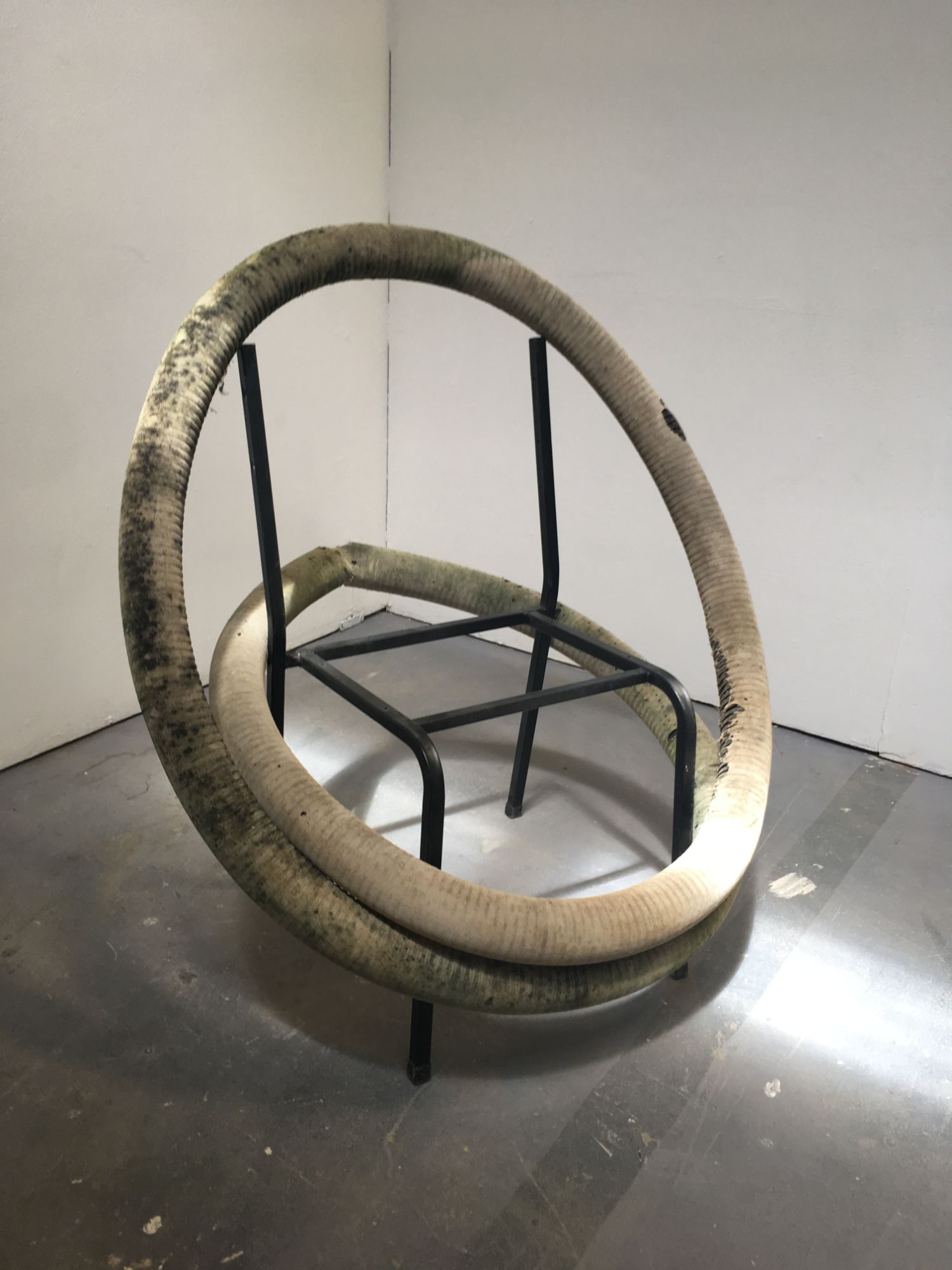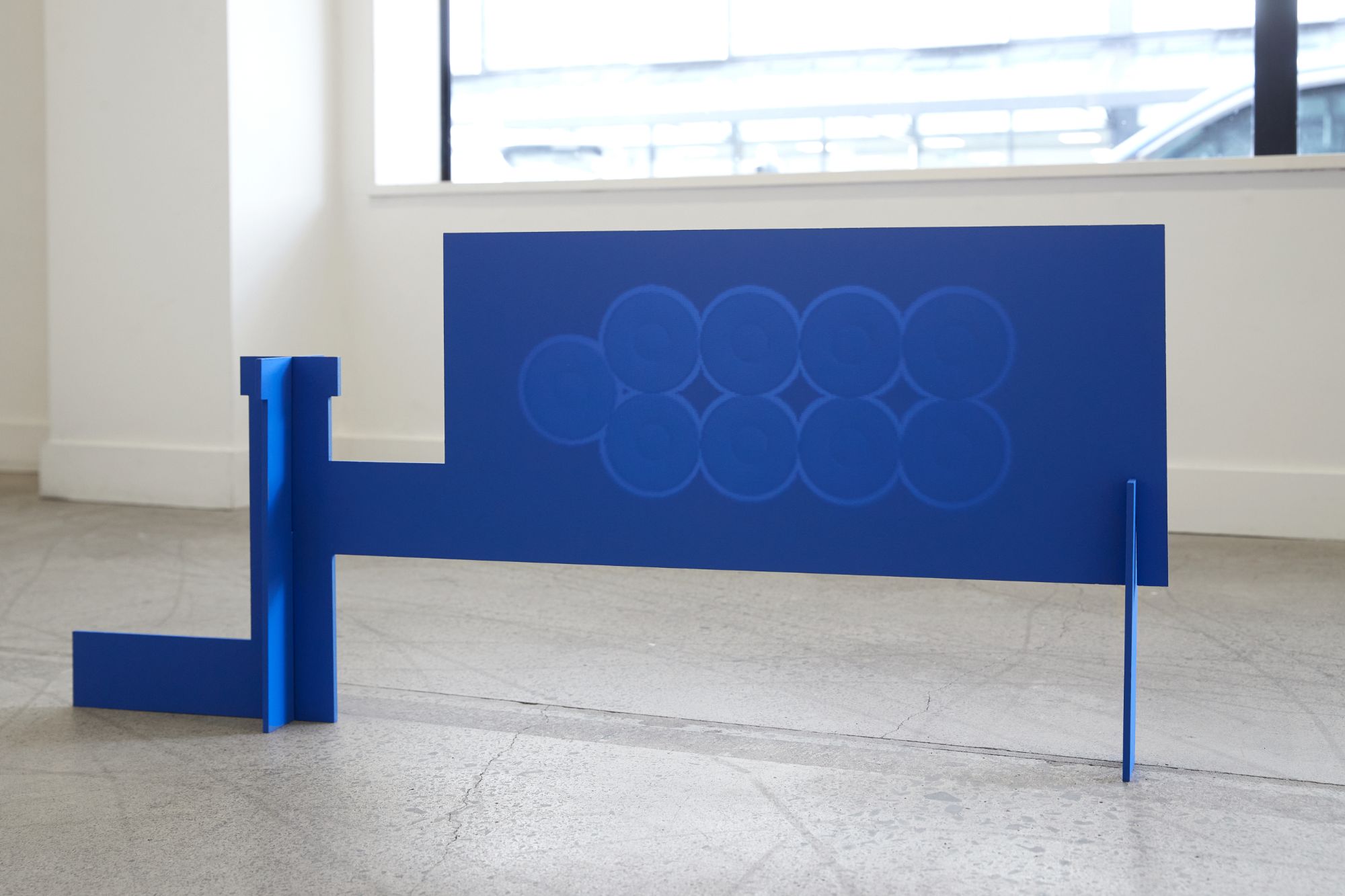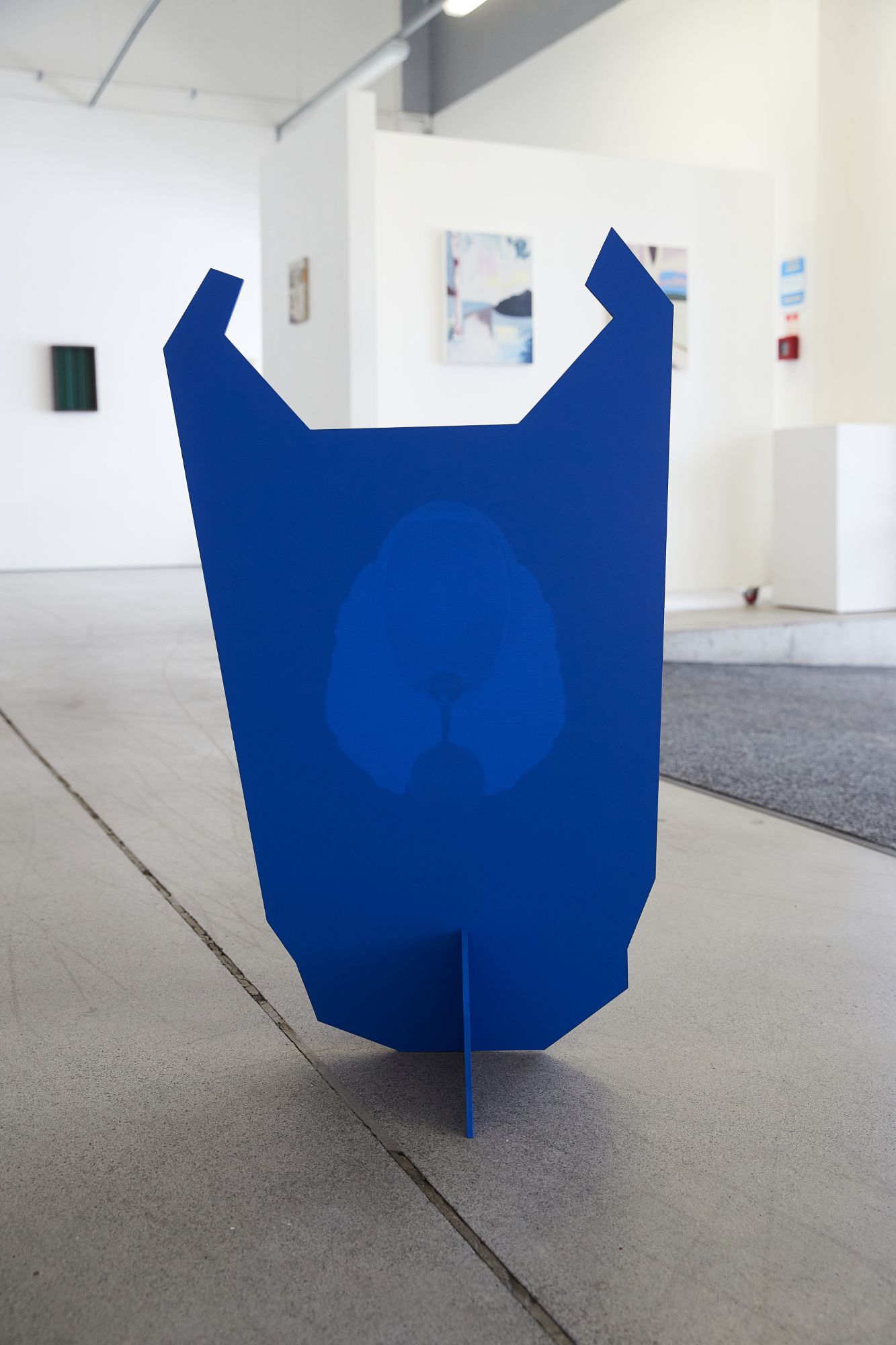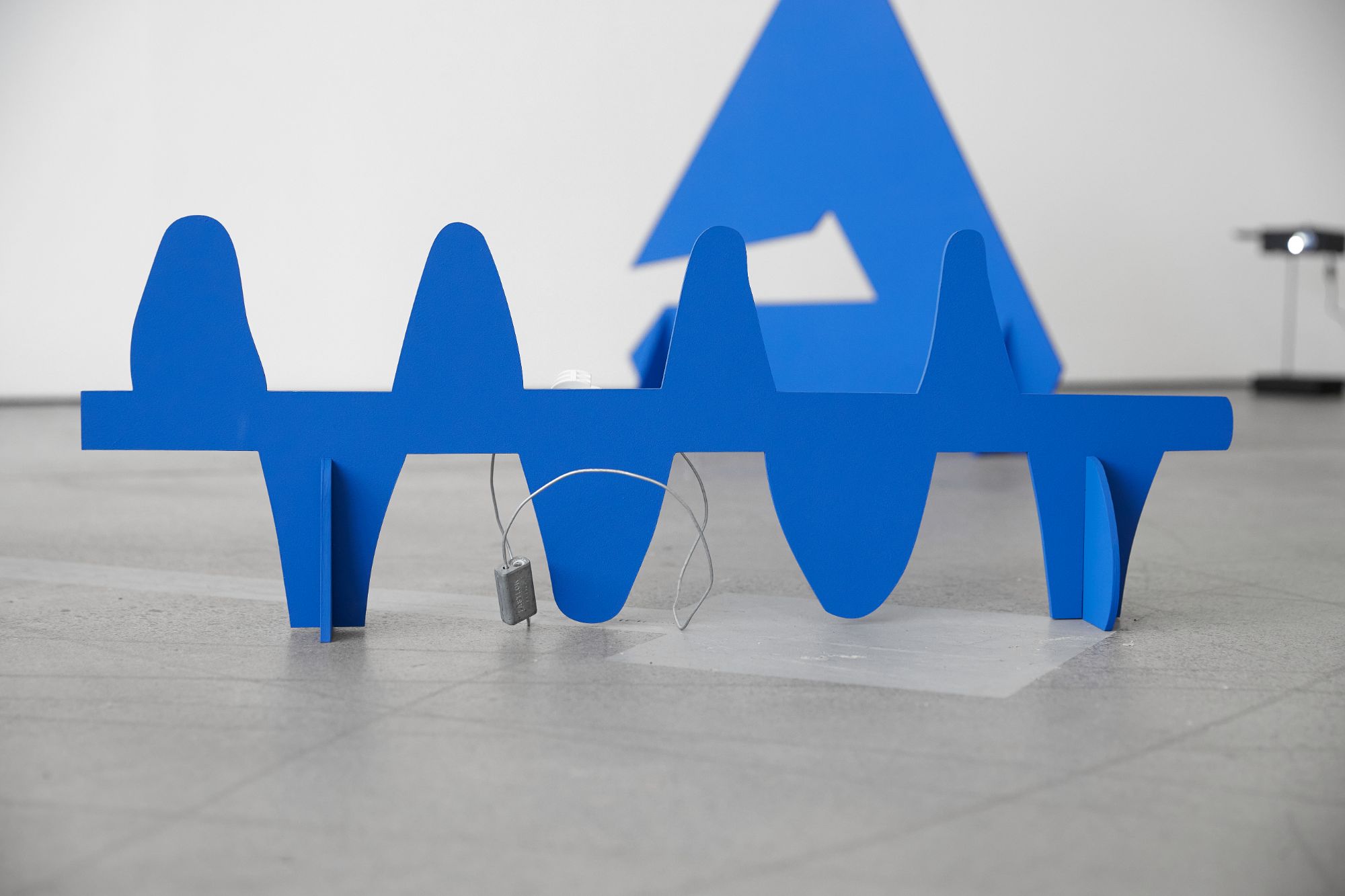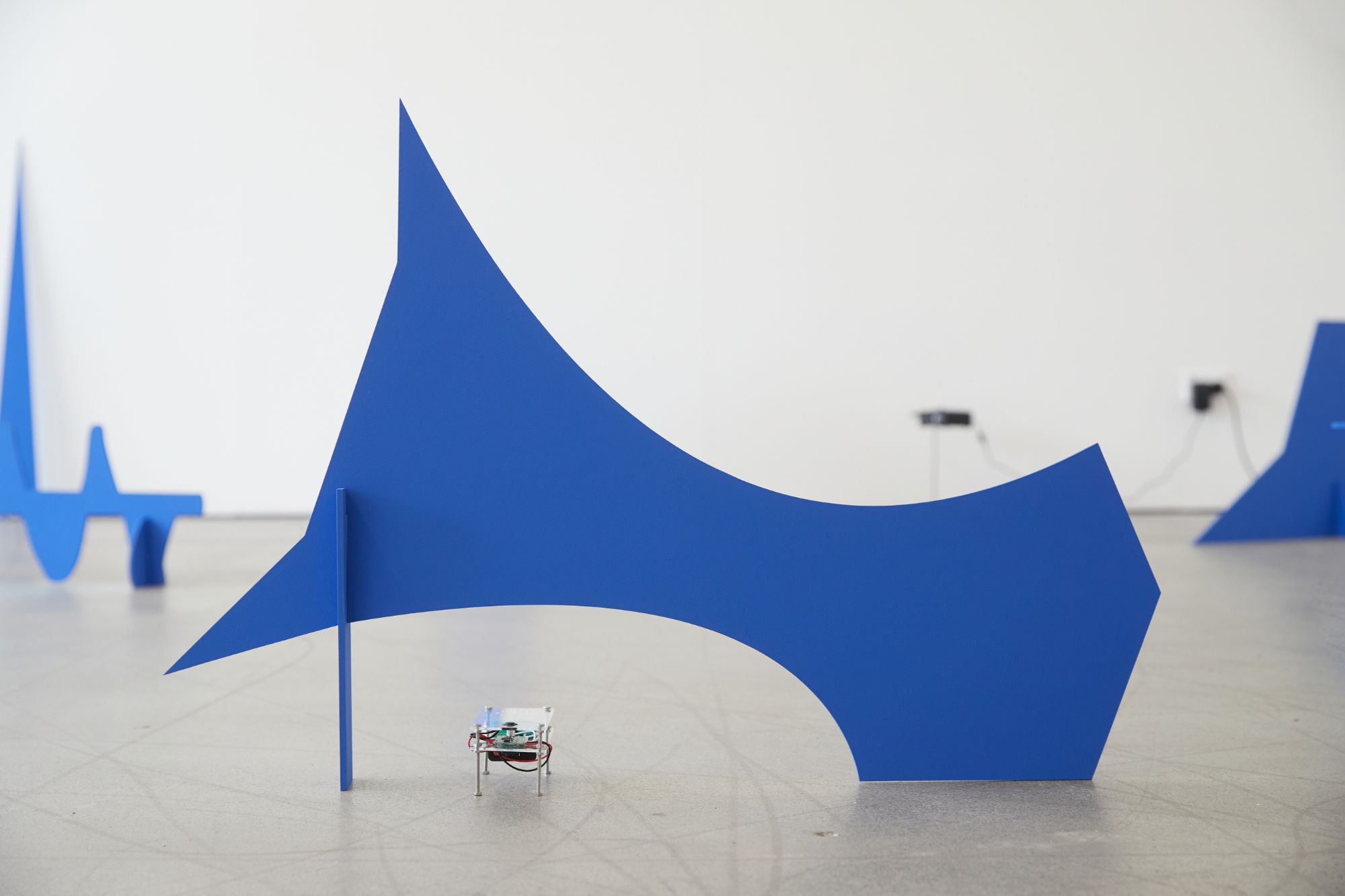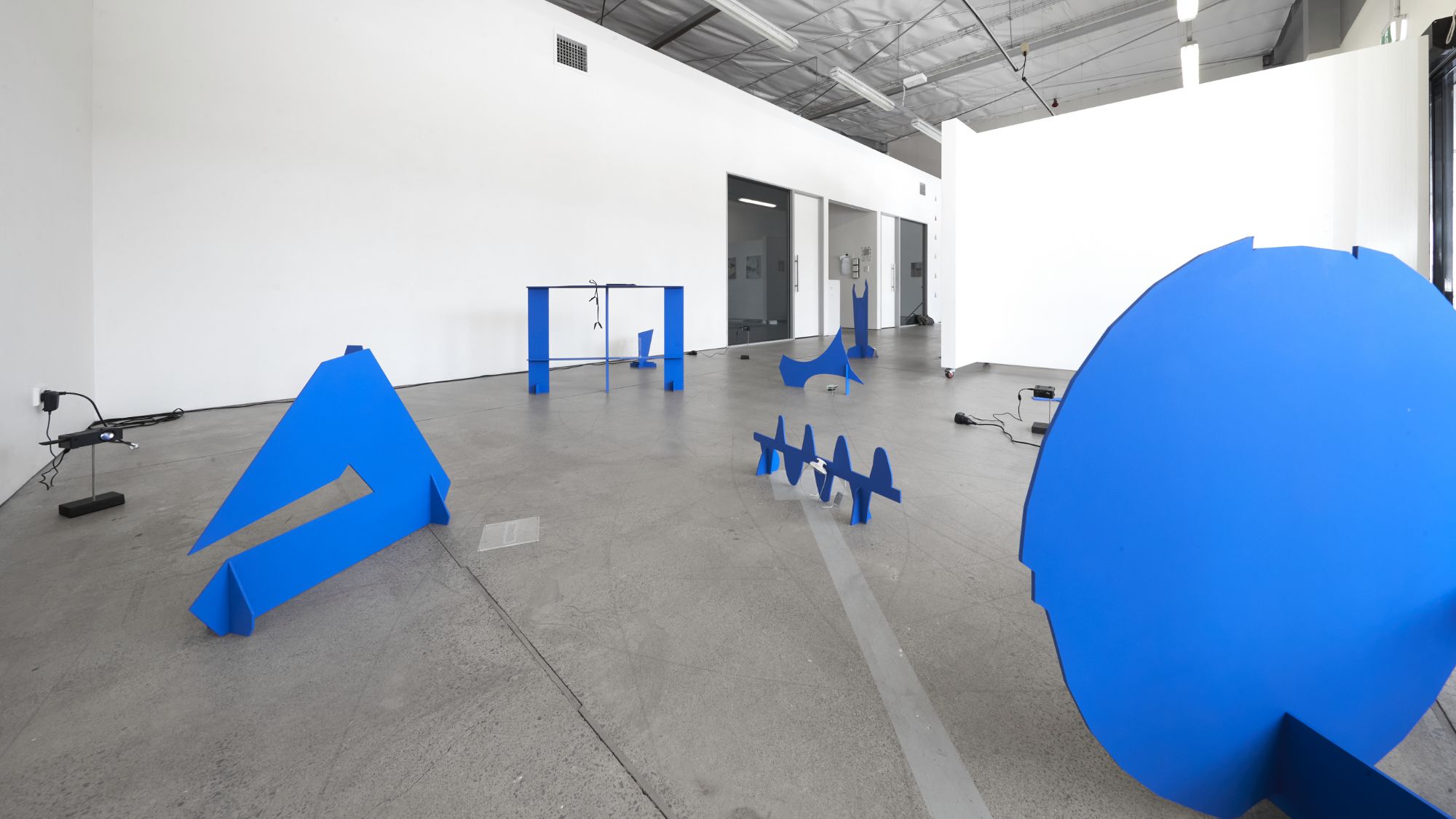Ocom, 2021, close up of Tesubul (Etched acrylic ,150 x 150mm) and Wegenfar (2728c painted MDF).
Ocom, 2021, close up of Hymeir (fencing wire, jaw claw insulator and fast lock) and Draudril (2728c painted MDF).
Ocom, 2021, close up of Syntheschild (Projected moving image) and Energeri (2728c painted MDF).
Ocom, 2021, close up of Aihiado (projected moving image) and Souvenomento (2728c painted MDF).
Ocom, 2021, close up of AR component.
OCOM: A communion of (un)real objects (2021) explores spectrums that constitute speculative objects. In exploring different representations of the speculative object it is slowly revealed that each have their own distinct properties, thus allowing these objects to be represented, experienced and read in a multitude of ways.
The work oscillates between binary relationships: virtual/physical; undesirable/desirable; handmade/manufactured, ambiguous/accessible and fictional/real.These binaries create artefacts that are equal in value, but not necessarily equal in the information they communicate; creating a sense of dynamism, that rejects the completeness of a distinct object for a pluralism that moves towards greater possibilities.
The objects in Ocom are hybridised forms, both in construction and conceptually. They utilise existing objects of the real and virtual world as component forms or parts and combine into new objects. Such adaption
inherently modifies or challenges its intangible system of formal meanings, consequences and ideas. Thus, the component form becomes tangential to its origin, without fully rejecting it, opening out to alternative contexts. These objects are also created by way of withheld scenarios, adding to their ambiguity, generated out of a specificity and not whimsy.
The idea of congregating things is central to the work. A concourse of objects brought into a spatial gathering explores the idea of: a series of interrelated parts (works) that have a certain autonomy and integrity while still retaining a relationship to the wider, active network (install).
